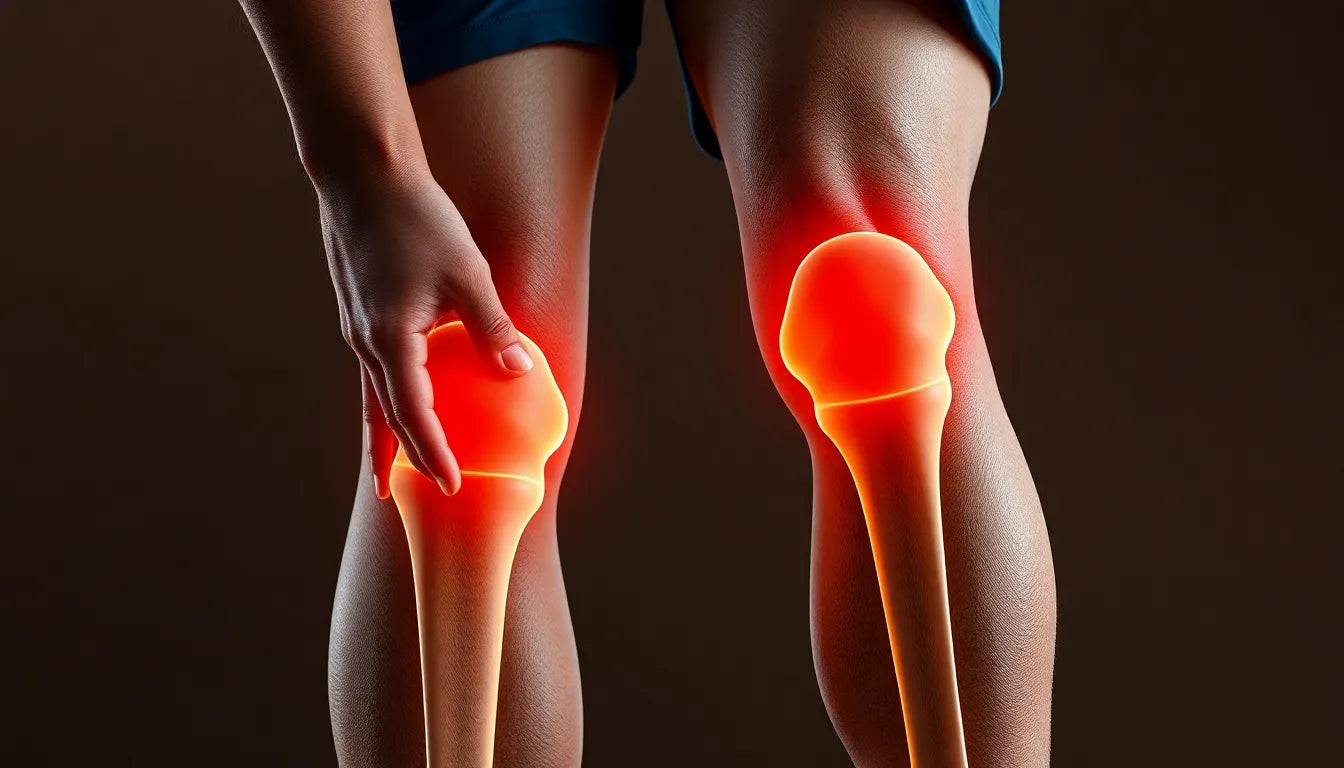Experiencing pain in the legs from the knees down is a common issue that affects many people, impacting daily life and mobility. This type of pain can manifest in various forms, such as sharp, burning sensations, numbness, tingling, or even inflammation. Understanding the nature and causes of this discomfort is crucial for finding effective relief and improving quality of life.
Understanding lower leg pain
Pain from the knees down can vary significantly in intensity and type. Some people experience a consistent, dull ache, while others might suffer from sudden, sharp pains that can be debilitating. Additionally, symptoms like numbness or tingling can indicate nerve involvement, which might require specific interventions. Inflammation, often visible as swelling, can also accompany these symptoms, indicating underlying issues that need to be addressed.
These experiences are not just uncomfortable; they can significantly interfere with one's ability to perform everyday activities. Whether it's walking, standing for extended periods, or engaging in physical exercise, pain in the lower legs can be a major hindrance. This makes it essential to understand the potential causes and solutions to manage and alleviate the pain effectively.
The impact of lower leg pain
The repercussions of untreated lower leg pain extend beyond physical discomfort. When pain limits physical activity, it can lead to a sedentary lifestyle, which in turn may cause further health complications such as weight gain, cardiovascular issues, and decreased muscle strength. The inability to move freely can also affect one's independence and overall quality of life.
Moreover, chronic pain can take a toll on mental health, leading to emotional and psychological challenges. Persistent discomfort and the limitations it imposes can result in feelings of frustration, anxiety, and even depression. This highlights the importance of seeking solutions and addressing the root causes of the pain, rather than merely managing symptoms.
Understanding the underlying issues contributing to pain in the legs from the knees down is key to finding effective relief. Whether the pain is due to joint or nerve issues, foot mechanics, or other factors, identifying the cause is the first step toward improving one's well-being. In the following sections, we will delve deeper into the common causes of this pain and explore potential solutions to help you regain comfort and mobility.
common causes of pain from knees down
When it comes to understanding why you might be experiencing pain in your legs from the knees down, several factors could be at play. Joint and nerve issues are among the most prevalent causes. Conditions such as osteoarthritis, known in Danish as slidgigt, can lead to significant discomfort due to the wear and tear of the cartilage in the knee joints. This degeneration can cause inflammation and pain that radiates down the legs.
Another common culprit is a herniated disc, or diskusprolaps, which occurs when the soft center of a spinal disc pushes through a crack in the tougher exterior casing. This can compress the nerves that run down the legs, leading to sharp, shooting pains, numbness, or tingling sensations.
foot mechanics and overuse
Improper foot mechanics, such as overpronation or a collapsed arch (nedsunken forfod), can also contribute significantly to pain in the lower legs. These issues affect how weight is distributed across the feet, leading to muscle strain and joint pain. Over time, these mechanical imbalances can exacerbate discomfort, especially with prolonged standing or walking.
Overuse and muscle fatigue are additional factors that can lead to pain from the knees down. Engaging in repetitive activities without adequate rest and recovery can strain muscles and joints, leading to inflammation and pain. This is particularly common among athletes and individuals with physically demanding jobs.
circulation and inflammatory conditions
Poor blood circulation is another important aspect to consider. Conditions such as peripheral arterial disease can restrict blood flow to the legs, causing pain, especially during physical activity. Inflammatory conditions like heel spurs or shin splints also contribute to pain, often causing swelling and discomfort in the lower legs.
professional insights
Understanding these causes is crucial for finding effective relief. Consulting with healthcare professionals such as osteopaths, physiotherapists, and chiropractors can provide valuable insights into therapeutic solutions. These experts can offer personalized treatment plans that address the specific underlying issues contributing to your pain.
Professional evaluation is particularly important if your symptoms are persistent or severe. An expert can help identify the root cause of your pain and recommend appropriate interventions, whether that involves physical therapy, ergonomic adjustments, or in some cases, surgical options.
By gaining a deeper understanding of the potential causes of pain in the legs from the knees down, you can take proactive steps toward relief and improved mobility. In the next section, we will explore practical self-care strategies and when to seek medical help to ensure you can manage and alleviate your discomfort effectively.
self-care and professional treatments for lower leg pain
Addressing pain in the legs from the knees down involves a combination of self-care strategies and professional treatments. Making lifestyle modifications can significantly alleviate discomfort and improve mobility. One of the most straightforward adjustments is ensuring the use of proper footwear that provides adequate support for your feet. This can help correct foot mechanics and distribute weight evenly, reducing strain on muscles and joints.

Lumbar support belt
Provides adjustable lower back support to relieve pain, tension, and aid in mobility.
Incorporating regular exercises and stretches into your routine is another effective way to manage pain. Strengthening exercises can improve muscle support around the knees and lower legs, while flexibility exercises can enhance joint mobility and reduce stiffness. It's also important to allow time for rest and recovery, especially if your pain is related to overuse or muscle fatigue.

37 exercises collected in the ultimate exercise book
Expert-selected exercises for injury prevention, relief, and improved mobility & strength.
For those experiencing persistent or severe symptoms, consulting a healthcare professional is crucial. A medical expert can assess your condition and recommend appropriate treatments, which may include physical therapy, ergonomic adjustments, or even surgical interventions in more serious cases. Seeking professional help is particularly important if you experience symptoms such as numbness, swelling, or a loss of strength, as these could indicate more serious underlying issues.
frequently asked questions
What are the most common causes of pain from the knees down?
The most common causes include joint problems, nerve impact, incorrect foot positioning, overuse, poor circulation, and inflammatory conditions. Each of these factors can contribute to discomfort and require specific strategies for relief.
How can I relieve pain in my lower legs at home?
To relieve pain at home, consider using ergonomic aids, wearing supportive footwear, practicing regular stretching, and ensuring proper rest. These measures can help manage symptoms and prevent further discomfort.
When should I see a doctor for leg pain?
It's advisable to see a doctor if you experience severe symptoms, numbness, swelling, or if the pain persists despite self-care efforts. A healthcare professional can provide a thorough evaluation and recommend appropriate treatments.
Can lifestyle changes really make a difference?
Yes, lifestyle changes can significantly impact your pain levels and overall leg function. Incorporating proper footwear, ergonomic support, and regular exercise can help reduce pain and improve mobility.
Are there any serious conditions associated with lower leg pain?
Yes, serious conditions such as osteoarthritis, herniated discs, and peripheral arterial disease can lead to significant pain. These conditions often require medical attention to manage symptoms effectively and prevent further complications.
Kilder
- Senzone. ”Ondt i benene fra knæene og ned - Her er de mest effektive løsninger.”
- Gigtforeningen. ”Hvor har du ondt? Knæ.”
- Kiropraktor3400. ”Ben- og iskiassmerter.”
- Indlægsklinikken. ”Smerter i skinneben.”
- Region Sjælland. ”Åreforkalkning - Hvilesmerter i benene.”
- Sundhed.dk. ”Åreforkalkning i benene (Claudicatio).”


















